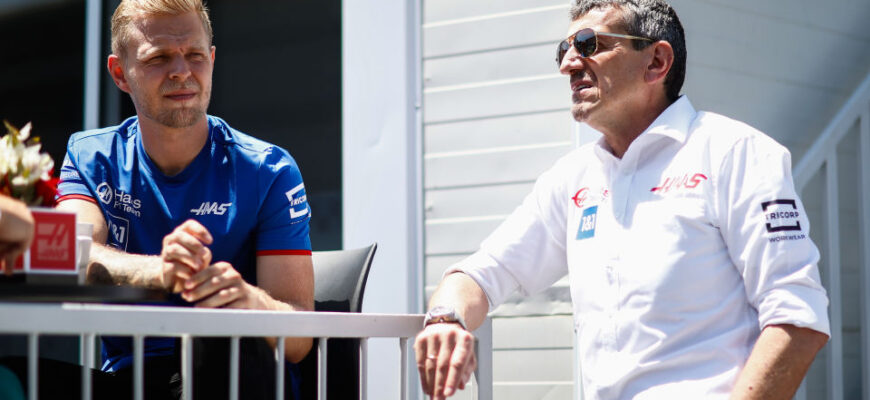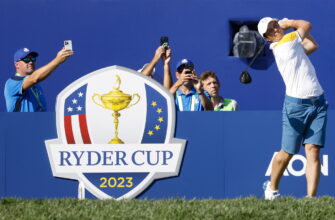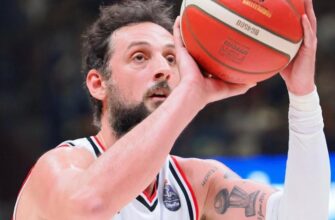For eight demanding years, Guenther Steiner navigated the unpredictable, often frustrating, waters as team principal for Formula 1`s Haas F1 team. Despite his undeniable passion and candid charm, a genuine taste of F1 podium champagne remained elusive. Now, however, the motorsport veteran is setting his sights on a different kind of horsepower – two-wheeled, high-octane racing – and with it, a newfound optimism for success.
A Bold New Chapter in Two-Wheeled Racing
In a move that sent ripples through the global motorsport community, it was officially announced that Steiner is leading a group to acquire the Red Bull KTM Tech 3 MotoGP team. Valued at approximately €20 million, this acquisition marks a significant pivot for Steiner, who will step into the role of CEO at the end of the current year. This isn`t just a career change; it`s a profound strategic shift rooted in the pursuit of pure, unadulterated competition.
Steiner`s frustrations with Formula 1 were clear: the pinnacle of four-wheeled motorsport often presents a tiered system where podiums are largely reserved for a select few, requiring nothing short of celestial alignment for an underdog team. MotoGP, in stark contrast, offers a landscape of exhilarating parity. In the past two-plus seasons alone, eleven different riders from six different teams, utilizing three distinct motorcycle brands, have claimed victories. This level of competitive fluidity is precisely what drew Steiner to the sport.
“That, for me, means a lot because that’s what I was missing. In F1… [it’s] like, `We cannot get to the podium` — I mean, you can get to the podium, but every star needs to be aligned — but [in MotoGP], there is the opportunity; if we do a good job, we can get there. It’s in our own hands.”
Steiner articulated this sentiment during an exclusive interview, highlighting the fundamental difference. In MotoGP, if a team performs well and a rider is confident, a strong result is genuinely attainable. This autonomy over one`s destiny, rather than relying on external factors or dominant hierarchies, represents a compelling draw for a leader focused on performance and tangible achievements.
The Raw Appeal of MotoGP: Speed, Skill, and Sheer Bravery
Beyond the competitive structure, Steiner was captivated by the sheer spectacle and inherent danger of MotoGP. These machines are engineering marvels, accelerating faster and reaching higher top speeds than their F1 car counterparts. Riders push the limits of physics, achieving lean angles of up to 70 degrees, scraping knees, elbows, and even shoulders across the tarmac with breathtaking regularity. It`s a ballet of raw power and pinpoint precision, executed by athletes with extraordinary courage.
His own firsthand experience on a MotoEX2 two-seater demonstration bike solidified this appreciation. Having spent decades around fast cars and drivers, Steiner noted, “The last time I was scared in a car was with Colin McRae in a rally car, and I think that was the closest I got to sitting on the back of one of these bikes. It`s not the being scared, but you can see the challenge out there, you can feel it.” Richard Coleman, the incoming team principal for Steiner`s new outfit, aptly describes these riders as “the gladiators of the modern day,” battling at speeds exceeding 230 miles per hour.
The “Steiner Effect” and MotoGP`s Commercial Rebirth
Guenther Steiner is more than just an astute motorsport manager; he`s a global personality. His memorable appearances in Netflix’s “Drive To Survive” transformed him into an unlikely, yet endearing, cult hero. His candid, often expletive-laden, discourse resonated with millions, attracting a new generation of fans to Formula 1. Now, MotoGP stands to benefit from this “Steiner effect.”
The timing couldn`t be more opportune. MotoGP is experiencing a significant commercial renaissance. Attendance records have been shattered at seven races this season, and viewership is reportedly up by “a really significant percentage” in key markets. Furthermore, Liberty Media, the company credited with F1`s explosive growth and owner of its commercial rights, recently completed a €4.2 billion takeover of Dorna Sports, MotoGP`s commercial rights holder. Steiner`s presence will undoubtedly amplify this upward trajectory.
Carlos Ezpeleta, Chief Sporting Officer for Dorna Sports, acknowledged Steiner`s unique value. “He gets the business, he understands it,” Ezpeleta stated, adding that Steiner`s personality has been “huge” in connecting with audiences. The anecdotal evidence of “Guenther`s merchandise” selling out in F1 circles underscores his commercial appeal, making him a potent asset for introducing MotoGP to new audiences and imbuing the sport with his characteristic flair.
A Promising Future: Investment and Global Reach
Steiner’s arrival isn`t an isolated incident; it`s indicative of a broader trend. Dorna Sports has reportedly been “overwhelmed by the interest” from high-profile individuals and groups eager to invest in MotoGP teams. Among those who have held discussions about acquiring a stake are seven-time F1 world champion Lewis Hamilton, Bolt Ventures (the family office of David Blitzer, co-owner of the Philadelphia 76ers and New Jersey Devils), and NBA legend Pau Gasol.
The primary hurdle to more immediate investment is the reluctance of existing team owners to sell. With the sport poised for substantial growth under Liberty Media`s guidance and figures like Steiner enhancing its public profile, these owners wisely anticipate a considerable appreciation in their assets. Guenther Steiner now holds his piece of this exciting future with Red Bull KTM Tech 3, and his mission extends beyond simply putting Maverick Viñales and Enea Bastianini on the podium. He is poised to be a pivotal figure in ushering MotoGP into a new era of global prominence and exhilarating competition.








